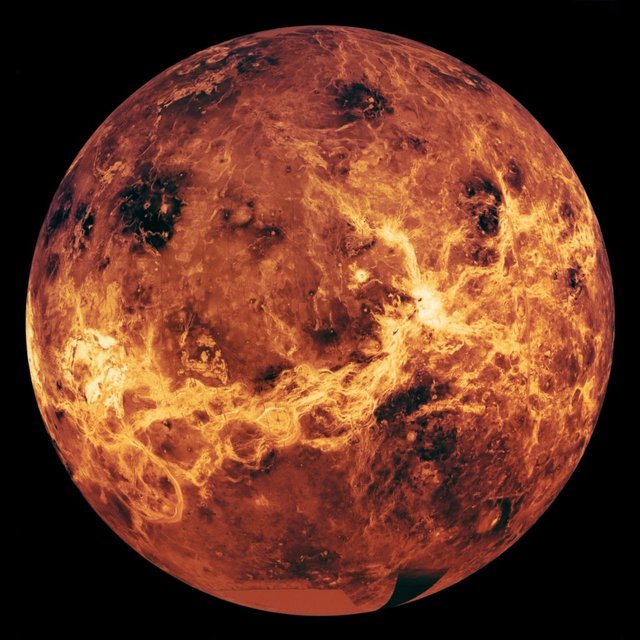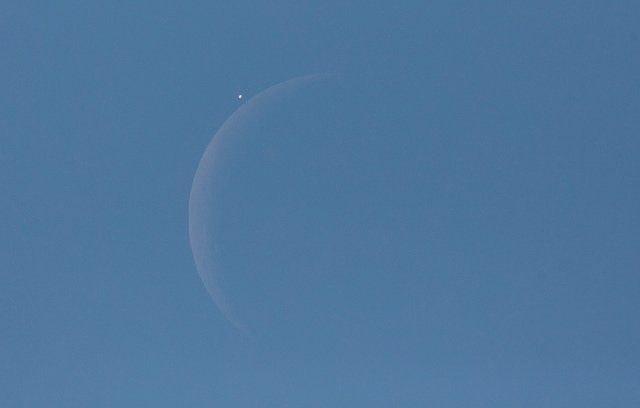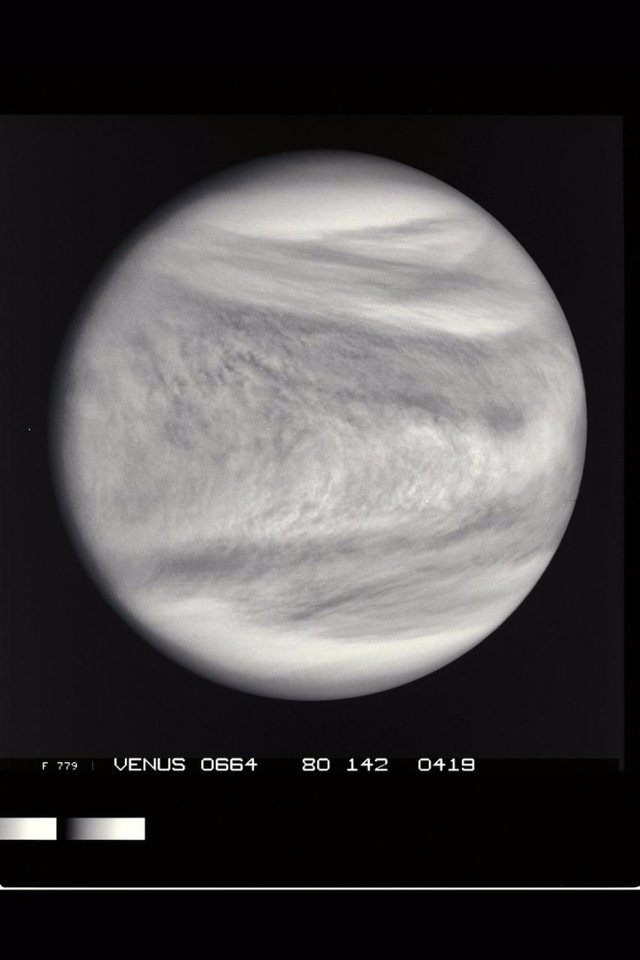Astronomy 101 - A look at Venus
Welcome to the first post of a new series on Astronomy. Today we will begin by taking a look at Venus.

While commonly called the Morning or evening star, it is actually not a star at all. The planet Venus - named after the Roman goddess of love and beauty - is one of the brightest objects in the night sky, sometimes even visible during the day. Its brightness is caused by the reflection of the sun on the thick cloud layer covering the planet, making it the brightest planet of our solar system.

Venus next to the crescent moon during the daytime. Credit: (NASA/Joel Kowsky)
Characteristics
What makes Venus really unique is that a day on Venus takes longer than a whole year on Venus. This means that the planet rotates quicker around the Sun than the time it takes to rotate around its own axis. A single day on Venus equals to 243 earth days while a single year on Venus equals to 225 earth days.
Both Venus and the Earth share a similar size, surface area, total volume and mass. Before we reached the space-age, many scientists thought that Venus also shared a similar temperature and it maybe had even life. But in 1962, it was discovered by the Mariner 2 Space Probe that the average surface temperature on Venus was between 400 °C to 500 °C (750 ℉ to 930 ℉), and that it's full of volcanic activity. Later missions showed that its atmosphere consists out of very thick layers of Carbon-dioxide, causing a very strong greenhouse effect, resulting in the high surface temperatures.

Photograph of Venus by the Pioneer space probe, 1981. Credit: (NASA)
Colonization?
While the surface temperatures on Venus are very high, the atmosphere may be suitable for manned missions. Due to the thick layers of carbon dioxide, the density of the cloud layers is so high that blimps filled with regular earth air would stay afloat on top. NASA has contemplated a manned mission but due to the high potential costs involved, it stays only an idea for now.
I hope you enjoyed the first post of this series. Be sure to follow to stay up to date to new posts. Thanks!
Source material:
NASA
Very interesting topic. I like it. Thanks @johnthehoan=)